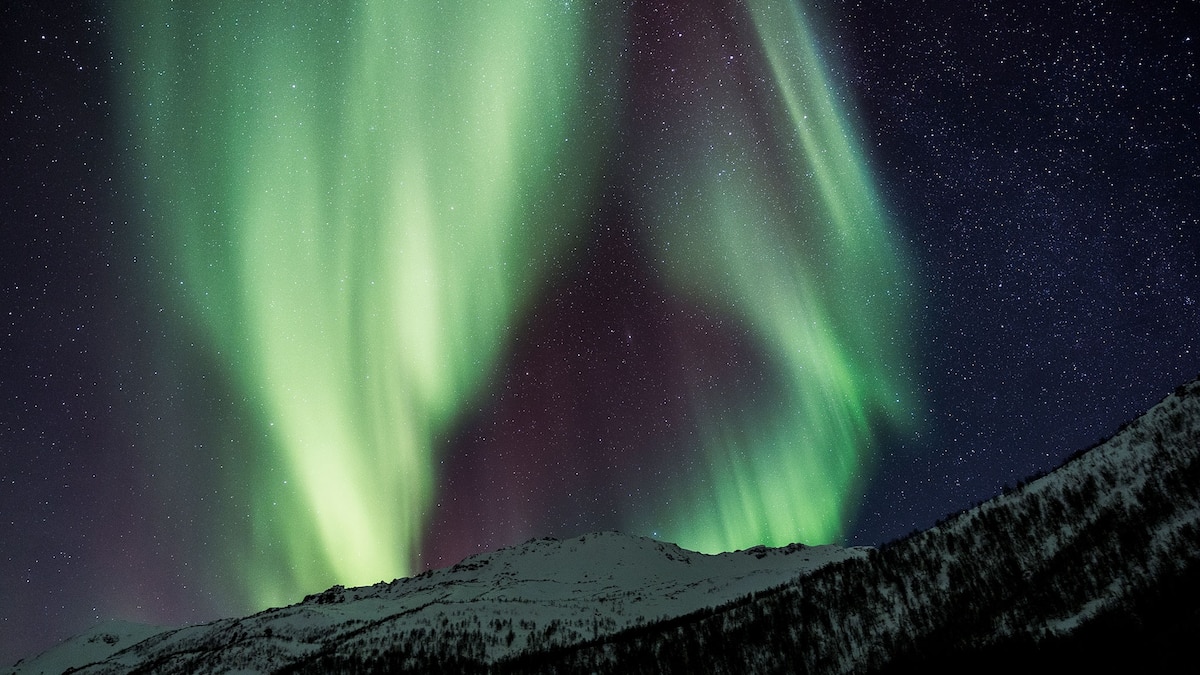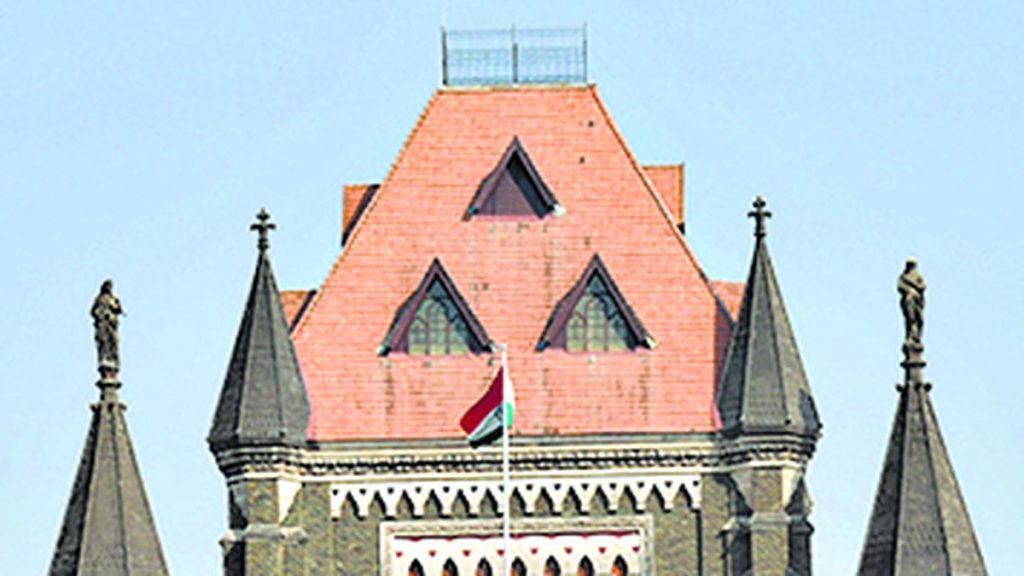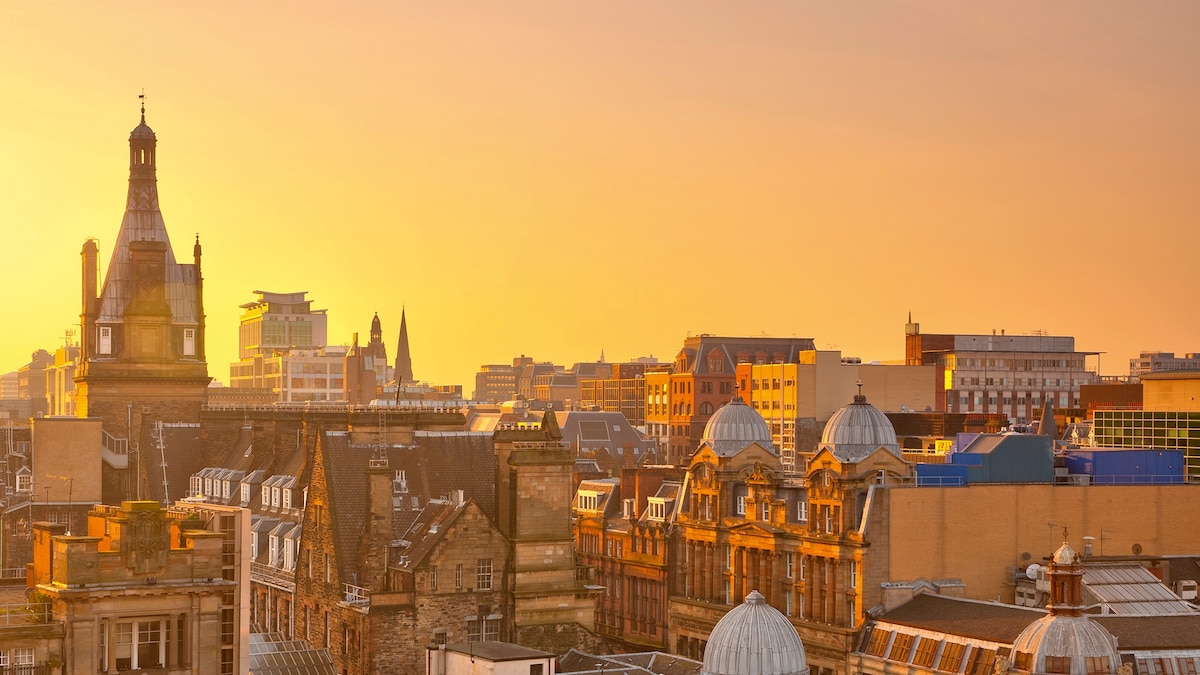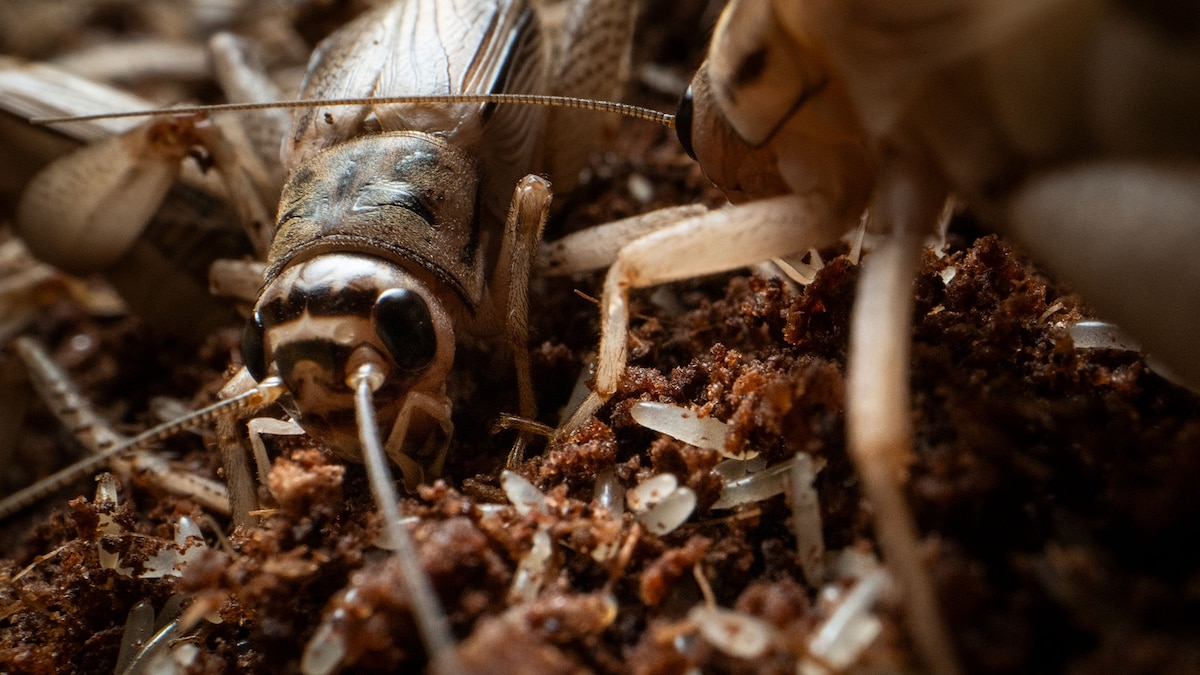Now Reading: The best view of the northern lights involves a lot of travel—but it is so worth it
-
01
The best view of the northern lights involves a lot of travel—but it is so worth it
The best view of the northern lights involves a lot of travel—but it is so worth it

There are somewhere around one septillion stars in the universe. On a clear night in the middle of a quiet birch forest in northern Norway, it feels as if you can see every single one of them. Tiny dots of starlight on a spectrum of brightness dotted every corner of the night sky in a celestial show that, for me, has only been rivaled by what I’ve seen in the middle of the American desert, far removed from any source of light.
However, I wasn’t in northern Norway just to stargaze (though that was one of the major perks). I was one of eight guests of Klättermusen Experiences, a new offshoot of the 50-year-old Swedish high-end outdoor outfitter, Klättermusen, whose focus is on sustainable adventure travel. The plan was to spend a few days ski touring and a few days dogsledding, and if we were lucky, we would see the aurora borealis, the astral phenomenon that has helped build an entire tourism industry in the northernmost reaches of our planet.
After four flights (Raleigh-Durham to Boston to Reykjavik to Oslo to Alta), I arrived in Alta, a small commune in the Finnmark region that calls itself “the city of the northern lights.” From there, it was still a 90-minute drive to our final destination: The tiny village of Langfjordbotn, population 114. This is where we (me and seven other travelers) would spend the week in two small lodges at the edge of the Langfjorden, a long, slender tributary of the much larger Altafjord. We were four degrees above the Arctic Circle and, less than a week before we arrived, the sun made its first appearance since late November.
The northern lights, however, took a few more days.
(Related: Going on a northern light’s trip? Here’s what to pack)
Part one: Ski touring
To the uninitiated (read: me), ski touring is a subgenre of the sport that involves skiing up the mountain before riding down. To ski up, you attach skins — adhesive strips of mohair — to the bottom of your skis. The tiny hairs dig into the snow, giving you enough traction to glide your skis along the snow, zig-zagging your way up the mountain. It’s an extraordinarily simple yet magnificently effective invention.
As I had never skied before, my hosts sourced me a splitboard, which is basically a snowboard that you can separate in two and essentially turn them into skis for the trip up the mountain before reattaching them to snowboard down (which is something I’ve been doing for three decades).

Local guides Tore and Vegard Karlstrøm lead the group on a ski touring adventure near Jøkelfjord in Finnmark, Norway.
Photograph by Arnaud Mallez
We were guided by Tore and Vegard Karlstrøm, the father-and-son team who own and operate the local arctic adventure company Spor Guiding. Tore is a leading avalanche expert, while Vegard coaches the Icelandic national cross-country team. Like many Norwegians, both appear to have been born with skis attached to their feet. At one point, while Vegard was trying to help someone who was having an issue with her boots, one of his skis went rogue and slid almost entirely down the mountain. No problem. He simply skied down several hundred meters on a single ski, retrieved his lost plank, and climbed back to the group in little more than a few minutes.
The first full day of our trip found us skinning up a 600-meter mountain, stopping halfway for lunch at a plateau where the view included several fjords, countless peaks, a massive, domed glacier, and an island where Tore told us a Viking cemetery had recently been discovered.
By the time we resumed our trip and reached the peak of the mountain, the sun had set, forcing us to illuminate our powerful headlamps so we might see on our way down. It was 2:45 in the afternoon.
The following day, we climbed a bigger mountain with a steeper ascent that was more technical, and far more demanding. However, the prize at the top was somehow even more rewarding than the day before. From the summit, we saw more mountains, glaciers, valleys, and fjords. We also had an unobstructed view of the section of the fjords that open up toward the Atlantic.

Ski touring involves first skiing up a mountain before making your way back down.
Photograph by Arnaud Mallez
But the view this day was punctuated by the sunset (again, at around 3 p.m.). The clouds were breaking and the low winter sun painted everything in a muted pink-orange, giving the white land and its gray seas a stunning pastel hue.
Part two: The northern lights
We skied back down the mountain and drove back to our little fjord-side lodge, our eyes fixed on the dark, spellbinding sky. Those septillion stars were eminently visible and our hopes for a celestial show — which, to that point, had been obscured by cloudy skies — were high.
As we arrived home, a small, dull light was thickening over the peak that rose behind our lodge. Our group rushed out to the ice-covered road that led to our house, all of our necks craned skyward.

The northern lights over a guest lodge in the Finnmark region of Norway.
Photograph by Arnaud Mallez
Within minutes, thick ribbons of brilliant green and purple spread out above us, punctuating the flicker of seemingly every star in the known universe. At one point, the aqua particles exploded in bloom over our heads, creating something that looked like a dome, or perhaps the falling embers of a fireworks. But when we looked up again, the dome had morphed into something else entirely. Something photos of the northern lights can’t capture is just how fast they move and reappropriate themselves into something wholly different. The lights are kinetic, almost as if they are living creatures swimming languidly through the night sky.
The show lasted about an hour. Maybe more, maybe less. We were too busy marveling at the phenomenon to keep track of time. And when it finally ended, we returned to our lodge for a dinner of minke whale and blueberry soup.
(Related: How to photograph the northern lights, according to an expert)
You May Also Like
Part three: Sled dogs
After a lifetime spent in civilization, where we bend the earth to our will, drawing roads and passes, neighborhoods and entire cities onto the once uninhabited, it’s a marvel to travel over the contours of the land as they’ve been built over hundreds of millions of years. The trails we traversed exist because they’re the easiest route through the wilderness. Not because they’re the shortest distance between point A and point B. Up here, it’s sometimes hard to believe there even is an A and a B. As half-a-dozen Alaskan huskies pulled me through the Finnmark wilderness, I couldn’t help but consider the geography and the topography of the land beneath my sled’s skids.

Marianne Skjøthaug and Arne Karlstrøm have won world championships for sled dog racing.
Photograph by Arnaud Mallez
For two days, we were guests of Marianne Skjøthaug and Arne Karlstrøm at their remote sled dog farm, Parken Gård Husky. The couple are two of the best sled dog racers on earth, having won world championships and some of the most prestigious races in Europe.
(Related: Humans and dogs have been sledding together for nearly 10,000 years)
For two days, Arne and Marianne guided us on how to drive a sled, the quirks of each dog’s role and personality, the rules and etiquette of sled dog racing, and whatever other information they could fill us with. At one point, halfway through our second day, we stopped at a remote cabin, no bigger than a small studio apartment, where they had coffee and hot chocolate, sausages to cook over an open fire their son Isaac had built, and a wraparound “couch” surrounding the fire, cut straight out of the snow and covered with animal pelts, so that we might rest our weary legs.
All the while, our teams of dogs dug tiny trenches into the frozen ground, where they would burrow and rest, waiting patiently for our lunch to end. And as soon as it did, they all shot up, tugging at the lines, barking and howling and baying, anxious for us to untie their sleds from nearby trees, so that they might keep running across the frozen land.
Imagine that moment when you grab your dog’s leash and she starts going crazy. Now multiply that by 70.
Part four: One more show
On our final night, as our group crowded around a pair of long tables in the attic-turned-rustic dining room of our lodge, our phones buzzed simultaneously with an alert. One of our guides was outside and she alerted our group thread that, after another cloudy night or two, the blue-green-pink ribbons of the aurora borealis appeared to be returning.

Friendships form quickly when traveling with a small group.
Photograph by Arnaud Mallez
We put down our forks and pulled on our coats before rushing outside to the frozen walkway in front of our small lodge. And there, once again, were the undulating strips of light, their edges seeming to fade away into the night sky with little semblance of definition.
We took more photos as we laughed, hooted, and hollered at the phenomenon unfurling over our heads. And then, seemingly quicker than the first time, the lights were gone and all that was left in the clear night sky were those septillion stars.
It was almost as if, with a return drive to Alta awaiting us the following morning and a handful of flights to get back to the U.S., the cosmos were waving goodbye. Or, maybe if we’re lucky, it was more of a “see you soon.”
Michael Venutolo-Mantovani is a writer and musician who has contributed to National Geographic, the New York Times, GQ, Wired, Condé Nast Traveler, and many others. He lives in Chapel Hill, North Carolina with his wife and their children.
























